Shopify vs WooCommerce Dropshipping: Which is Better for Dropshipping?
Dropshipping is one of the most popular business models in the Internet age, especially among entrepreneurs who don’t want to invest a huge initial investment upfront. In this article, I will break down the strengths and weaknesses of both Shopify vs WooCommerce dropshipping, and then you can make a decision for yourself based on your needs. Let’s jump right in!
Exclusive Offer: Get Shopify 33 days for just $1 + The Online Store Starter Kit
Start your 3-day free trial, and enjoy your first month of Shopify for $1 plus the premium package designed especially for new Shopify merchants!
Shopify vs Woocommerce Dropshipping: What Are They?
What Is Shopify?

Shopify is a self-hosted platform that you can use to build up an online store for yourself. With Shopify, you won’t have to pay for separate hosting as it is included in all of Shopify’s packages. Shopify provides you with any feature you need to build and run an online store, particularly a dropshipping store, whether you are a beginner or an expert.
You won’t have to pay immediately to use Shopify; it offers a 3-day trial before you make a purchase decision. During your free trial, you can build a standalone website with Shopify’s free themes and free apps.
What Is Woocommerce?
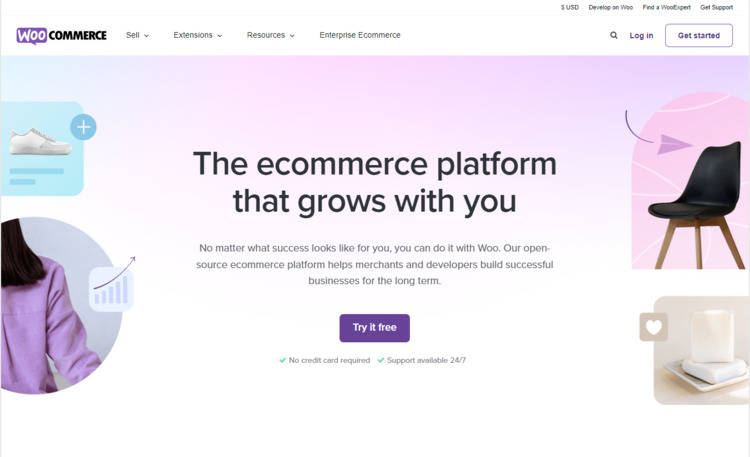
Unlike Shopify, WooCommerce is not an eCommerce platform that provides hosted solutions. WooCommerce is a free WordPress plugin that adds eCommerce functionality to your WordPress website so that you can have a standalone, functional online store. You can absolutely start your dropshipping business on WooCommerce.
So, in short, WooCommerce helps you build an online store on WordPress. WordPress is a content management platform that powers millions of blogs worldwide. WooCommerce transforms this content platform into a fully-functioning eCommerce platform.
Now you know WooCommerce vs Shopify for dropshipping is possible. But whether Shopify vs Woocommerce for dropshipping is better for you? Let’s take a closer look at their pros and cons.
Shopify vs WooCommerce Dropshipping: Pros and Cons
Pros And Cons Of Shopify
Pros of Shopify
1. Well-designed and functional Dashboard

You will manage your eCommerce website with the Shopify dashboard. This dashboard provides you with a wide range of features and reports that enable you to understand how your online store performs regarding orders, sales, and many other metrics. You can get a real-time report of the number of orders you have acquired, see the best-performing products, or check your current inventory with just a few clicks.
2. Built-in features
Shopify offers a lot of built-in features for you to run an online dropshipping store. The features vary depending on the subscription plan you’re on. However, the features on the cheapest plan—Shopify Basic Plan—is enough to run a profitable dropshipping business.
Also, Shopify Theme Store offers various free themes. At the time of writing, there are 12 free yet elegant and professional Shopify themes. You can customize the theme to suit your branding style, you can use free fonts, use your color scheme, insert your photos, and have much more flexibility. If you don’t have your own photos yet, there are thousands of eCommerce-themed stock photos taken by Shopify photographers that you can use. This is a perfect offer for newbies who want to try things out first before making any investment.

3. There is a plan for you, even when you are a beginner
Let’s be realistic here. It’s okay to try out free things at the beginning, but once you decide that you want to establish and run a serious online business, you need to invest money. You will need to pay for products, marketing costs, domain costs, and a Shopify plan too.
But don’t panic. What’s great about Shopify is it has a pricing plan for everyone. If you have a tight budget, you can sign up for the Shopify Starter Plan which costs only $5 per month. If you have a larger budget, you can pay for the Basic Plan, which costs $39 a month. And if you find your business idea high potential and want to open a huge store right off the bat, the Shopify Plus Plan is for you. You can check out our review of Shopify plans for more information.
4. An extensive library of apps
There is an app for any function that you need to operate your store on Shopify App Store. You can have apps for countdown timers, product sourcing apps for dropshipping, and many more. For a lot of apps, you will need to pay to use them. But there are countless free apps that you can use too.
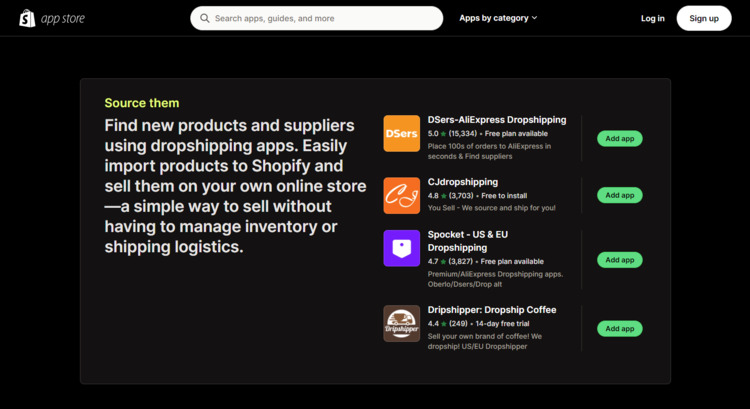
Learn more:
5. Tons of support
There are many sources of support that you can get while using Shopify for dropshipping. The ultimate goal of Shopify is to help you achieve success on their platform, so they do their best to provide you with as many sources of support as possible.
If you are new to Shopify and business, you can join the Shopify Academy, a free course for eCommerce entrepreneurs. You can learn from this course about various topics related to business, eCommerce, and Shopify. Shopify also has an army of support reps that can assist you 24/7 whenever you run into trouble with your store. There is a dedicated community on Shopify where eCommerce veterans are willing to help newbies grow with their advice.
You can check out our guide to how to get Shopify support.
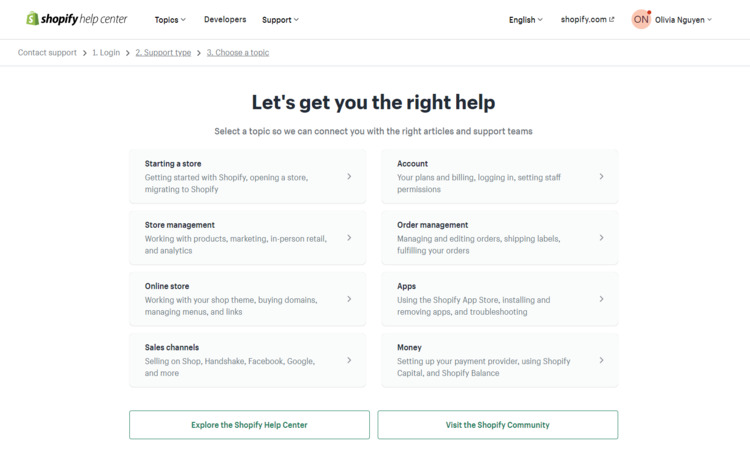
6. Selling on multiple channels
Shopify integrates its platforms with multiple sales channels to help you reach more customers and increase your sales. Here are some of the main channels that you can easily integrate with your Shopify store:
- Sell on Amazon – Connecting Shopify to Amazon Professional Seller.
- Sell on Facebook – Selling your Shopify products on a Facebook page.
- Sell on Pinterest – Selling your products through pins directly.
- Sell on Mobile Apps – Selling Shopify products on apps you develop.
7. Excellent site performance
We shoppers don’t want to wait in lines, and we don’t want to view websites that load slowly, either. The majority of customers are likely to leave a website that loads slowly, and if customers leave before coming to your website, your products don’t get to be seen, let alone sold. You don’t have to worry about slow-loading sites with Shopify because Shopify-powered websites are simply fast.
8. Shopify is powering more than 4 million stores up to 2019
The number already speaks on behalf of Shopify.
Cons of Shopify
1. It uses its own coding language.
Shopify uses its own self-developed PHP coding language called “Liquid”. All Shopify themes are coded in this format, which makes it harder to customize your theme unless you are familiar with the language. This is, in fact, not a weakness to Shopify, but surely is a weakness to many users who don’t code in Liquid. But you don’t need to worry about this, as Shopify support will always be there to help when you want to customize your theme.
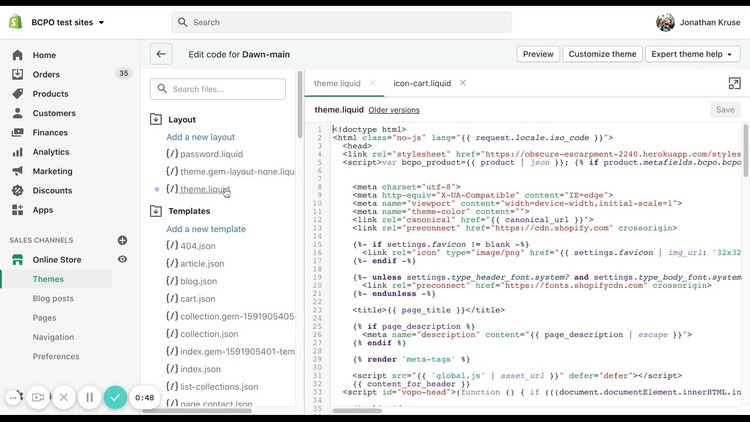
2. Price of a monthly subscription
I’ve mentioned that you can start with Shopify for $5/month, but this Starter Plan is just for Buy Button sellers who don’t need a standalone website. If you want to build and run a standalone, functional website, go for the Shopify Basic Plan, which costs $39/month.
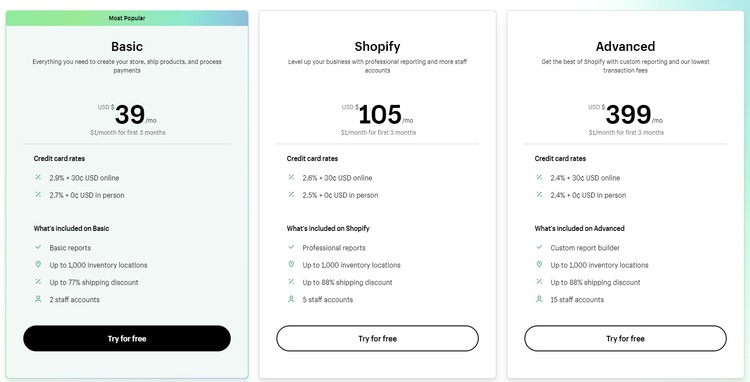
3. Transaction fees
Shopify requires its users to pay a percentage of their sales as transaction fees. This fee used to be charged on all of Shopify’s plans, but it no longer does if you use the Shopify Payment option as your credit card processor.
Pros And Cons Of Woocommerce
Pros of WooCommerce
1. Customization is unlimited
WordPress is an open-source platform, which means the code is available, and it is written in the popular coding language PHP. Thanks to this, when it comes to customization with WooCommerce, the possibilities are endless. You do have the flexibility to design and customize your store however you want. Woo-commerce is known as the world’s most customizable eCommerce platform.
2. Advanced features for larger online stores
WooCommerce dropshipping users tend to be businesses that need a larger online store. When you get bigger, you need more flexibility. There is a huge library of both free and paid plugins that you can use on WooCommerce to make your store very flexible and powerful.
3. Powerful SEO
As WordPress is a content management platform, it has a blogging infrastructure and gives you the ability to dive deep into the source code of your data. This will help you get full advantage of SEO and rise to the dominant position on Google Rankings in your niche.
Cons of WooCommerce:
1. WooCommerce could be hard to use for beginners
What makes WooCommerce great is a disadvantage for some people, especially those who are not familiar with website development. If you are a complete beginner, there is a fair amount of knowledge to learn about websites before you can use WooCommerce to develop a decent website.
2. Lack of support
WooCommerce does not provide its users with phone support. You can submit a ticket to WooCommerce Support, but it might take much longer to get support than with Shopify. You can get solutions for problems you run into in Woo comerce communities, but that will be a lot more work, and you will need to be a great self-learner. Freedom does sound great, but it can also be a serious problem if you can’t handle it.
3. More work
When you use Shopify, you can get a problem solved just by submitting a support request to Shopify’s support team, who will handle everything for you. Maintaining a Woo comerce website will require a lot more work as you have to be responsible for everything from web hosting, website security, and the implementation of plugins.
Shopify vs Woocommerce Dropshipping: How To Choose The Best Fit For Dropshipping?
Here are the important features that you need to pay attention to when evaluating an eCommerce platform—either Shopify or WooCommerce—for your dropshipping business:
- Load time
- Ease of use
- Support
- Design flexibility and mobile-readiness
- Site search
- SEO tools
- Upselling & cross-selling
- Product options
- Robust content management system
- Integrations and apps
I will break down each of these factors below, and by the end of this article, you will know which one suits you best.double
Shopify vs Woocommerce Dropshipping: In-Depth Review
Pricing Comparison Between Woocommerce Vs Shopify
As you’re building a dropshipping business on either Shopify or WooCommerce, there are a few types of fees you need to be aware of, including:
- Subscription fees
- Transaction fees
- Hosting and domain name fees
Shopify and WooCommerce have different approaches when it comes to online business. Therefore, they have different pricing models.
Shopify pricing
Subscription fees
Shopify offers several pricing tiers, and each of them comes with default built-in features.
You can start selling on Shopify with Shopify Starter Plan at $5/month, but this plan is just a buy button that allows you to sell on Facebook or social media in general or integrate your offline store with the Shopify dashboard.
If you want a functional and professional online business and access to more advanced tools to exponentially grow your business (like email marketing, reporting and analytics, etc.), you need to buy a Shopify subscription plan ranging from $39/month to $399/month.
- Basic: $39 per month
- Shopify: $105 per month
- Advanced: $399 per month
For new users, Shopify offers a deal: you only have to pay $1 for one of the plans above in the first three months. You can click here to grab this deal right away!
NOTE: The pricing for each plan varies based on your location. You can check how much Shopify costs in your country in the button below.
With any of these plans, you will enjoy many features, such as a fast-loading website, a free SSL certificate, an inventory management system, abandoned cart recovery, and many more.
Transaction fees
Besides the subscription fees above, Shopify also charges transaction fees, which is a big concern to many businesses, especially high-volume businesses. For now, the fees range from 0.5 to 2% per transaction:
- Basic: 2%
- Shopify: 1%
- Advanced: 0.5%
However, you can avoid the transaction fees by using Shopify Payments, Shopify’s in-house payment gateway. You can click here to learn more about Shopify Payments.
However, whether you use Shopify or WooCommerce, you still have to pay the credit card rates.
Domain name fee
You can either use a free Shopify domain name (including “myshopify” in the domain) or buy your own domain name. The cost for a domain name really depends on the domain used, such as .blog, or .com.
Theme fees
In terms of themes, you need to pay for one too. Themes cost from $180-$360 for Shopify.
Apps
If you want to equip your store with features to increase your sales for your dropshipping business or automate your tasks, you’ll need to pay for apps too. Here are some apps that you might want to consider:
- Bold Upsells from $9.99/month
- Cross Sell Recommended Products at $19.99/month
- Subscriptions by ReCharge for $39.99/month
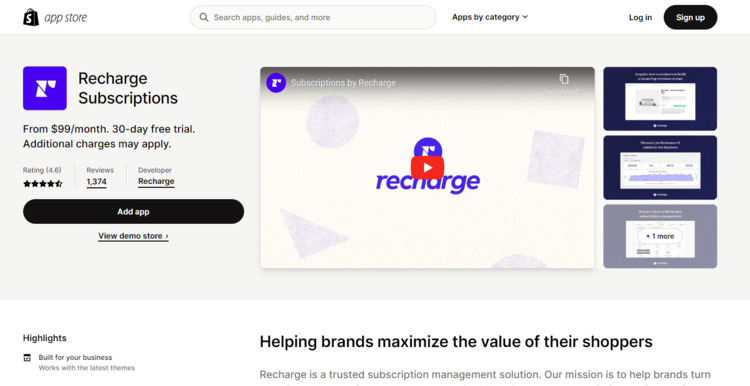
And here is our review of the Most essential apps on Shopify.
WooCommerce pricing
WordPress is free to use, and Woo-commerce is a free plugin, so it sounds like it won’t cost much to build a store on this platform, right? That’s not really the case because those are the only things that are free. You will need to pay for a theme, hosting, and many other plugins that help your store run properly:
- A domain name can cost about $12/year, and a hosting server is $5 - $25 per month.
- You will need to pay for a theme that costs around $59 - $69.
- If you want your store to have more features (you will), plugins and extensions can cost from $25.
- If you’re not familiar with website development, you might have to hire a developer (which costs from $20-$150 hourly, depending on the scope of work).
Here are some plugins that a WooCommerce store should have, so you might need to pay for them too.
- Yoast WooCommerce SEO - $99/year
- WPML (for multilingual websites) - Free
- ConvertPlug (to generate newsletter subscribers) - $23/year
- AliDropship (for dropshipping on AliExpress) - $89 (Use code GETPLUGIN10 with a 10% discount)
With these separate costs adding up, the cost of building a decent WooCommerce store can be:
- WooCommerce Starter: $500 - $3000 (Shared hosting, fewer paid plugins, paid design, and services).
- WooCommerce Custom: $5000 - $10,000 (Managed WordPress hosting, custom eCommerce design, more paid plugins, and services).
- WooCommerce Enterprise: $10,000+ (Dedicated hosting servers, custom design & features, paid advanced plugins and services).
We can see that the cost of WooCommerce Dropshipping does add up, which could cost even more than the upfront fees charged by Shopify.
Well, then, which platform should you use for your dropshipping business: Shopify or WooCommerce?
- If your dropshipping business is small and sales volume is low and you are considering whether to choose Shopify vs WooCommerce for dropshipping, we’d say it will definitely be more economical to use Shopify than WooCommerce.
- If you are willing to use Shopify Payments, go for Shopify. That’s the best choice.
- When your sales number increases, the transaction fee you need to pay Shopify will increase too, and that can make using Shopify more expensive than WooCommerce in the long run. In such a case, you should use WooCommerce dropshipping instead of Shopify dropshipping.
Sum up:
Shopify is a better choice than WooCommerce as it can save you more money if you know how to use it strategically.
Further Reading: The Most Comprehensive Guide of WooCommerce to Shopify Migration
Performance Comparison Between Woocommerce vs Shopify for Dropshipping
Load time between Shopify and WooCommerce
The average score for loading speed is 51.5/100 for mobile and 61.9/100 for PC, and WooCommerce failed to get there (42 for mobile and 52 for PC).
This is WooCommerce’s weakness, as its speed does not even catch up with the average. Shopify has the second fastest loading speed for both mobile (63) and PC (75).
Shopify’s load time and speed are among the best (both on PC and mobile). So in this battle, Shopify is definitely better than Woo-commerce. As you can see, Shopify is better for speed. In general, Shopify loads about 2 seconds faster than WooCommerce (1.3 and 3.4 seconds, respectively).
What does this mean?
Faster load time is among one of the most important SEO aspects. It also means better site ranking and more traffic (if your website loads slowly, lots of people might leave before your landing page loads). The slower your website loads, the more likely customers are to bounce, and you will lose potential leads because of that. Online shoppers are getting more and more impatient these days as everyone is trying to make their website load as fast as possible. If your website is slow, you will be left behind.
Although you can make efforts to improve loading speed if you use WooCommerce, that will take lots of time and money, and you’re not in complete control because your hosting provider does play a role here. What I mean by this is that if you sign up for a low-cost $3 hosting, you just can’t expect to have a fast-loading site regardless of how much money you pay SEO experts to optimize the speed of your website.
Blog and Content between Shopify and WooCommerce
WooCommerce is just the best platform for Content SEO as it is built on the best CMS platform—WordPress. Although you will still need a few plugins to harness the full power of WooCommerce SEO, using Woo-commerce has given you a bigger advantage than Shopify for content. With WooCommerce, you can create templates for blog posts that can look appealing and pleasing to the eyes, which will help you retain customers on your site longer. Having a pleasing design is a huge plus when it comes to creating content, especially long-form content.
In the meantime, Shopify is not optimized for SEO. This ecommerce platform does not offer these features in its packages. If you want to have them, you will need to pay for specialized apps that cost around $19/month.
Sum up:
Shopify wins over WooCommerce in terms of speed. If you’re planning to get the majority of your traffic from paid ads and not content SEO, Shopify is obviously a better choice than WooCommerce.
Dropshipping Features Comparison between Woocommerce vs Shopify
Shopify
Shopify is not really better than WooCommerce when it comes to features. While it has a big plus point compared to WooCommerce (offering abandoned cart email within all of its packages).
Just like Woo-commerce, you will need to pay to get many necessary features that every store needs such as upselling & cross-selling, SEO tools, reward points, etc.
WooCommerce
With WooCommerce, your dropshipping business will benefit from built-in SEO tools from WordPress. You can sell an unlimited number of products (both physical and digital), and you will have many other necessary features such as product search, ratings and reviews, zoomable product photos, upselling, and cross-selling. All of these features are built-in, and no extra costs are needed.
However, there are also important features that are not built in. It’s worth keeping in mind that the more plugins you add to your WordPress store, the more your site speed will suffer.
Sum up:
Either WooCommerce or Shopify is perfect feature-wise, but if you do dropshipping, Shopify is a better choice.
Themes And Templates Comparison Between Woocommerce Vs Shopify
Shopify themes
Shopify provides you with 12 free themes and 123 paid themes. The premium themes on the Shopify theme store cost from $180 - $360. The number of themes that Shopify has to offer is also more than WooCommerce. With that being said, Shopify Themes do look better design-wise. They look more modern and polished for eCommerce business.
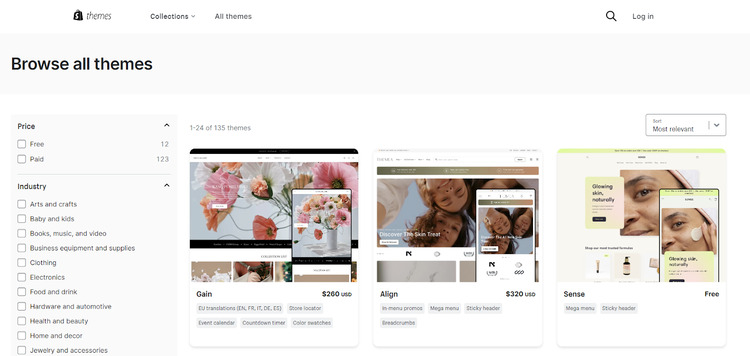
WooCommerce themes
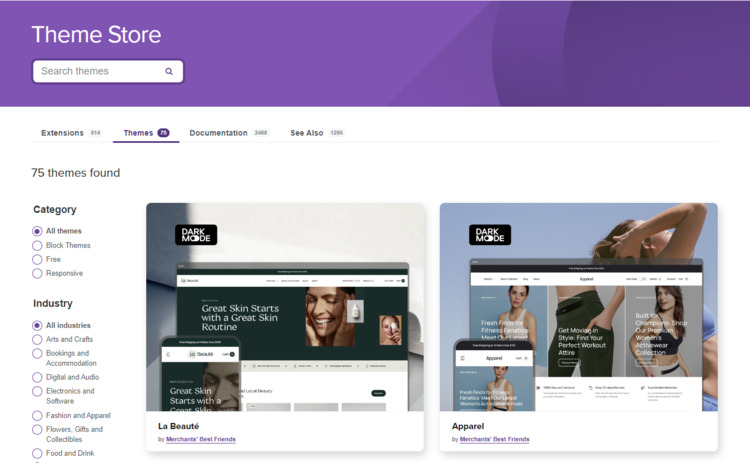
At the time of writing, there are about 77 themes on the WooCommerce theme marketplace. Among them, there are only 3 free themes.
However, there’s another option. You can choose a free basic theme, and then hire a developer to modify it into whatever you need it to be. That’s the flexibility WooCommerce can give you, but still at a cost. You can find good themes for Woo comerce on sites such as ThemeForest.
It’s worth keeping in mind that the theme you choose is just a part of your overall store design. How your website looks only depends on your product photography, how you arrange your collections, and so on. The more work you put into it, the better it will look.
There is one particular Woo-commerce theme that I personally think is great: Astra. You can modify it in many different ways even with the free version while lots of other themes try to hide their codes to force you to upgrade to their premium versions.
Also, with Elementor, the landing page builder, you can take your design to a whole new level without knowing a single line of code.
Here is a table of scores for WooCommerce and Shopify themes rated based on several important metrics:
Sum up
Shopify is the winner because its theme design is more consistently modern and appealing.
Customer Support Comparison Between Woocommerce vs Shopify
Shopify
Shopify is well-known for its high-quality customer support. They offer 24/7 support so you can contact them anytime you run into trouble. You can seek their support via email, live chat, and phone calls.
Apart from this human support, Shopify also provides its users with a large library of self-learn documentation that provides solutions to all sorts of questions.

WooCommerce
WooCommerce does not provide comprehensive support as Shopify does. It takes longer for them to answer your questions, and you can only reach out to WooCommerce support via email. However, you can get lots of support from the WordPress community in its forum. And when you truly need support from WooCommerce, you can create a free account and email for support.
Apart from the WooCommerce forum, there are loads of blogs on the Internet that write about doing online business with WooCommerce. So, WooCommerce is a suitable choice for people who love to figure out problems by doing their own research. On the other hand, Shopify is for people who always want to speak to a support rep. When it comes to customer support, nothing can beat a living, breathing person with expert knowledge.

Sum up
Shopify is the winner due to its more comprehensive customer service.
Ease Of Use Comparison Between Woocommerce Vs Shopify
Ease of use is one of the most important aspects to consider, as you’ll want the platform to help make your work easier, not harder.
Shopify
What makes Shopify powerful in terms of ease of use is that it’s a hosted solution. That means all you need to do to use it is log into the dashboard. You don’t have to worry about the backend of the system (the coding, hosting, etc.), so if you’re a beginner, that’s true peace of mind.

The setup process is also a piece of cake with Shopify because while you’re setting up your store, Shopify will help you along the way by providing useful tips about how you should structure your store.
Once your setup is done, using Shopify is just a no-brainer for absolute newbies. You can add products with a few clicks and write your descriptions. In short, it should take you a day to master how to use Shopify, and after that, you take it off your mind and focus on learning other things.
WooCommerce
WooCommerce is just as easy to use as Shopify once it’s fully set up, but the headache is the set-up process; it’s much harder to set up a Woo comerce store than a Shopify store.
The reason is WooCommerce is just a plugin on WordPress, and WordPress is an open-source platform. To make this comparison simpler, you can imagine that now you’re in need of a house, and you don’t know if you should choose WooCommerce or Shopify. Once you understand what they have to offer, you will know right away.
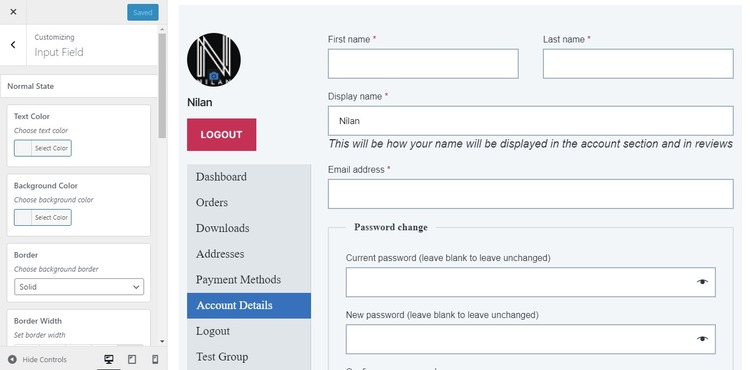
WooCommerce will offer you just a piece of land and nothing on it. You have to hire constructors, house designers, etc. to build up a house. On the other hand, Shopify offers you a piece of land AND a house. All you need to do with Shopify is buy furniture and decorate your house.
With WooCommerce, once you build up your house, it’s yours, you own it, no one will take it away from you. With Shopify, however, you don’t own the house, but you’re just renting it, and if you don’t pay your bills, Shopify will take the house back.
That should be simple enough, isn’t it?
Using WooCommerce, you will need to get the following to have a functioning website:
- A domain name
- A hosting
- WordPress installation
- WooCommerce plugin
- WordPress theme
- Several necessary WooCommerce extensions
- Security extensions
Not until you have these things set up that you can have a functional secure store to run. Yes, it’s much more complicated than setting up a Shopify store, which I have mentioned.
Sum up:
Both Shopify and WooCommerce are easy to use when they are fully set up. However, while it only takes you just about an hour to set up a Shopify store, it can take up to several days or a week to set up a WooCommerce one depending on your technical skills. In this case, moving from WooCommerce to Shopify would be a wise choice for a hassle-free selling experience”
SEO Features Comparison Between Woocommerce Vs Shopify

Shopify
Shopify probably cannot beat WooCommerce in terms of SEO as WooCommerce and WordPress are optimized for this aspect. However, that does not mean you cannot compete on Google rankings with Shopify. Shopify provides necessary SEO practices such as meta descriptions, customized URLs, etc. So I’d say that as long as you produce high-quality content for the Internet to consume, there’s no reason that you can’t get a good amount of organic traffic from Google.
There are some aspects that Shopify can beat WooCommerce in the SEO competition. Shopify is well-known for having a natural linking structure and some of the cleanest code on the market. This will certainly help create a smooth user experience and increase search rankings.
Finally, speed is also an important factor when it comes to getting a high ranking on Google. And in this area, Shopify certainly beats Woo comerce. Shopify is a hosted solution that is built on massive infrastructure, so its speed is just incredible. Speed will also help you reduce the bounce rate.
WooCommerce
Despite all of the advantages that Shopify has, overall, it can’t beat WooCommerce when it comes to SEO. WordPress is a platform optimized for content SEO. WooCommerce provides you with specialized tools, such as Yoast SEO, to help you add and edit meta information and content to make sure that your content can rank for keywords.
One problem that WooCommerce has that can negatively affect SEO rankings is its speed, but you can deal with this by choosing good hosting.
Sum up:
While Shopify does provide you with options to optimize for SEO, WooCommerce is still much stronger in the SEO game. So, if your dropshipping business relies heavily on organic traffic, you should choose WooCommerce instead of Shopify.
Payments And Fees Comparison Between Shopify vs Woocommerce Dropshipping

While both platforms offer tools to help you run your dropshipping business easier, they have different payments and fees structure. And it’s important to understand how each platform charges so that you calculate and expect your costs, especially if you are cost-sensitive.
Shopify
Shopify offers many third-party payments that are integrated into its system, so you won’t have to set them up yourself. Years ago, Shopify didn’t have its own payment processors and had to rely on third-parties options. But when Shopify realized that it cannot just let other guys handle one of the most important parts of the eCommerce business, it released its own payment processor - Shopify payments.
When you get started with Shopify, Shopify Payments is the default payment processor. On the surface, it looks like Shopify is handling transactions with its payment processor, but it’s Stripe that is doing the job underneath the ground. Stripe is one of the dominant forces in the card process area, and it has been in the industry for about a decade.
Stripe makes Shopify Payments a highly flexible processing solution as it is able to process a wide range of cards, both credit and debit, with no difficulties. All you need to do is connect Shopify Payments to your bank account and begin transactions.
Regarding security, this is not something that you need to worry about either. Shopify has earned a Level 1 PCI DSS certificate, which means it is completely secure and able to prevent any potential cyber fraud.
Shopify Payments can be used both online and offline, so if you have a brick-and-mortar store, you can use it too. If you install the Shopify mobile app, Shopify Payments will turn your smartphone into a mobile cash processor that can handle payments anywhere in the countries where it’s supported (UK, the US, Singapore, Spain, New Zealand, Ireland, Hong Kong, Japan, Canada, and Australia.)
Third-party payment processors. Shopify Payments is not the option processor on Shopify. There are a wide variety of other third-party options that you can use (PayPal, Amazon Pay, Authorize.net, WorldPay, etc.), if, for some reason, you don’t want to use Shopify Payments.
However, there is one thing to keep in mind if you decide to use third-party payment processors. That is transaction fees. There are no transaction fees if you use Shopify Payments, but if you use third-party processors, Shopify does charge you a fee. And this little fee can add up to a big number over a long period of time.
If you’re on the Basic Shopify Plan, you will be charged a transaction fee of 2.0%. It’s 1% for the Shopify Plan, and 0.5$ for the Shopify Advanced Plan.
When you’re calculating the costs of using Shopify, don’t forget to factor in this transaction fee; it can be a lot.
WooCommerce
WooCommerce does not have a WooCommerce payment processor, but it does offer some very secure ones from its third-party partners. There are two built-in options with Woo comerce: Paypal and Stripe. These two options are add-ons that you can choose to integrate with your online store. That way, you will be able to process transactions without taking your customers to a third-party checkout page. Paypal and Stripe are both reliable and secure payment processors, so you don’t have to worry about cyber thieves. Paypal and Stripe are not the only payment options you can use on WooCommerce. You can add other options as well by using plugins. WooCommerce is better than Shopify in a way that it does not charge you transaction fees; there is only a fee charged by the third-party processor that you use. Shopify has this fee, too, if you use third-party processors.
Sum up:
So, while both platforms provide you with just any payment processor that you want to use, WooCommerce seems to be better here as it does not charge transaction fees. If you, however, use Shopify Payments, there’s no winner between WooCommerce and Shopify when it comes to payment.
Security Comparison Between Shopify And Woocommerce Dropshipping

Shopify
Shopify, on the other hand, handles all of the security for you. This means when you use Shopify, you don’t have to think of or know anything about security at all. SSL certificate is included in all of the Shopify plans, so you don’t have to get it from a third-party provider. Just make sure that you choose a strong password to log into your store.
WooCommerce
If you use WooCommerce for your dropshipping store, it’s unfortunate that this platform does not provide you with any security. WordPress is an open-source platform, so you have to be completely responsible for the security of your website. You will have to buy on your own an SSL certificate from your hosting provider, and you have to make sure you choose a reliable and secure hosting provider too. You will need to install plugins for login security, two-factor authentication, and other things to secure your website. To obtain advanced knowledge about safety and online behavior, consider online cyber security courses online.
Sum up:
If you’re not familiar with cyber security, you might need to learn a lot to secure your website if you choose WooCommerce. But you won’t have to worry about security issues if you use Shopify.
How Long Will It Take To Build A Shopify Or Woocommerce Dropshipping Store?
Shopify
It’s much easier to set up a Shopify store from scratch.
Step 1: Register for a free store on Shopify.
Step 2: Upgrade to a paid plan.

Step 3: Buy a domain
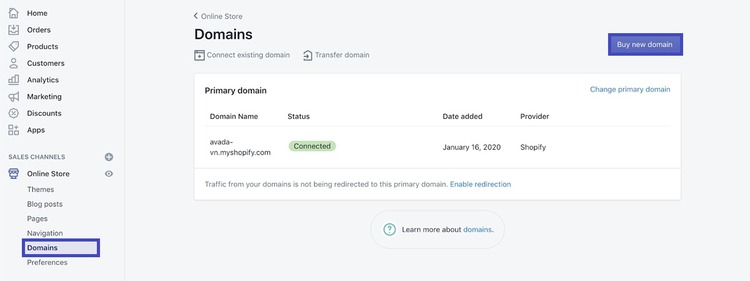
Step 4: Buy a theme on the Shopify theme store.
That’s it. That’s how you launch an online store with Shopify. No need for finding a hosting provider, no need for dealing with security, etc. Now you can add your products, create content, and start selling. All of this takes about 15 minutes to complete.
WooCommerce
Here are all of the steps that you need to take to build a well-functioning WooCommerce website:
Step 1: Find a hosting provider, as you can only have a WordPress site and install the WooCommerce plugin after you get hosting.
Most hosting providers will provide you with a cPanel account with a one-click WordPress installer. With this option, you can launch a WordPress site with one click.
Step 2: Run the installer app, and the system will get the rest done for you automatically. This process will take just a few seconds to launch a WordPress site on your domain.
Step 3: Once the installation finishes, you need to log into your WordPress account, and install the WooCommerce plugin in the Plugin tab within your dashboard. To make the setup process easier for you, Woo comerce will launch a wizard right after it is activated. Then you can proceed to set up elements of your store such as site pages, product pages, payment methods, etc.
At this point, your store is complete and ready to run for the most part. You will need to install some other plugins to make your website secure and functional. It will take about a day to set up all of the necessary functions.
This does not seem to take too long, but it’s much longer than setting up a Shopify store.
Sum up:
It’s obvious that setting up a store on Shopify is faster and a lot less difficult than on WooCommerce, so Shopify is the winner here.
If you are using WooCommerce and considering a switch, you can migrate migrate from Woocommerce to Shopify, and import product data from WooCommerce to Shopify in just two simple steps included: Products, Categories, Tags, Slugs, SKU, and Product Status are all available.
Final Words
This is such a long review, isn’t it? But I hope that it has given you a clear understanding of what the differences are between Shopify vs WooCommerce dropshipping and gain enough information to know which platform is the right choice for you.
Related Posts:
New Posts






